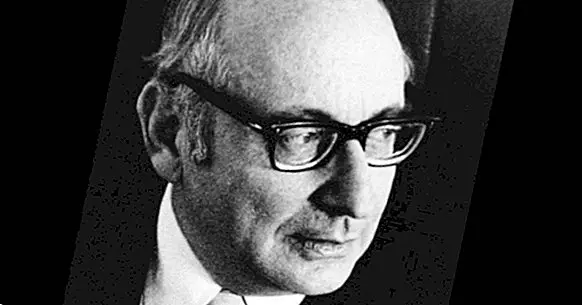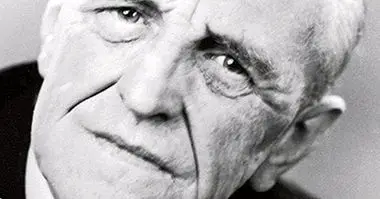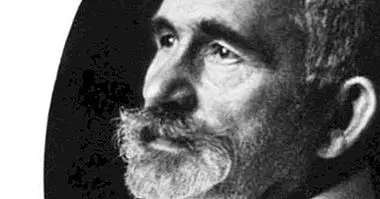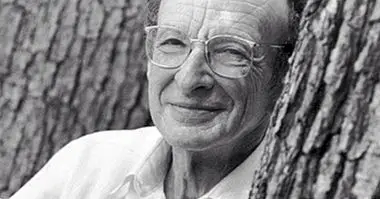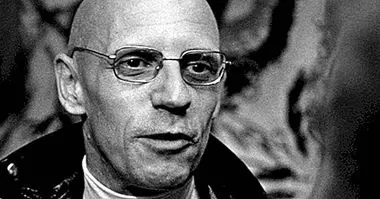Joseph Wolpe: biography of the inventor of systematic desensitization
The impact that Joseph Wolpe has generated in behavioral therapy has been stable and persistent. His dedication to the world of psychology lasted until almost a few months before his death, when he was still conducting lectures around the world.
Both psychology and psychiatry owe this prolific psychiatrist the knowledge and current success of the interventions and treatments of any type of phobia from the cognitive-behavioral point of view.
Next we will give a brief review of the life of this researcher through a biography of Joseph Wolpe .
- Related article: "Types of phobias: exploring the disorders of fear"
Who was Joseph Wolpe? Short biography
Famous psychiatrist of South African origin, Joseph Wolpe managed to position himself as one of the most influential personalities of behavioral therapy .
Born in South Africa in 1915, Wolpe lived his academic years at the University of the Witwatersrand. Later he received the Ford Fellowship scholarship for predoctoral studies, which gave him the opportunity to move for a year to Stanford University, in the United States, where he was able to pursue his studies in psychology within the Center for Behavioral Sciences.
After that year at Stanford University, Wolpe returned to South Africa. However, in the year 1960, he returned to the United States after accepting a job at the University of Virginia, staying there permanently.
After five years in that institution, Wolpe accepted a position at Temple University, in Philadelphia , institution in which it would remain until 1988.
His involvement in the study of anxiety
A milestone that forever marked Wolpe's life, and influenced him in his later work, was his enlistment as a medical officer in the South African army. The main motivation of Wolpe when enlisting was to treat the soldiers who, after returning from some battle, they suffered what at that time was called "war neurosis" . Currently, this affliction is known as Post Traumatic Stress Disorder.
At that time, the intervention that was made to the soldiers was based on the administration of a type of serum known as "serum of truth", under the belief that talking openly about traumatic experiences cured this type of neurosis. However, the treatment was rarely effective.
This failure in the results was what made Wolpe, a staunch follower of Sigmund Freud and psychoanalytic theories, question this type of intervention and will begin to investigate other treatment options .
This change in the direction of his interests as a mental health professional led him to develop his work within the field of behavioral psychology. Their reciprocal inhibition techniques, specifically systematic desensitization , were those that earned him a position of honor in the history books of psychology.
Joseph Wolpe died in the city of Los Angeles in 1997, at the age of 82 years.
- Related article: "History of Psychology: authors and main theories"
Wolpe's contributions to psychology
As mentioned above, Wolpe's leap from analytical psychology to more cognitive-behavioral paradigms, made it introduce great changes and contributions in this area.
Of these, the most important are the reciprocal inhibition techniques, and the famous systematic desensitization (DS). When reviewing the life and work of Joseph Wolpe it is essential to know this type of therapeutic resources, one of his main contributions to mental health.
Reciprocal inhibition techniques
In their effort to achieve more effective interventions and treatments for psychiatric conditions, specifically for the treatment of anxiety ; Wolpe developed his techniques of reciprocal inhibition, which were based on the training of assertiveness.
Wolpe's idea of reciprocal inhibition was based on generating in the patients feelings or responses that were incompatible with the sensation of anxiety, and thus reducing the levels of this.
At the beginning of your investigations Wolpe used cats to which he offered food while presenting a conditioned fear stimulus , using the act of eating as a way to inhibit the anxiety response.
After achieving successful results with cats, Wolpe used reciprocal inhibition in his clients in the form of assertiveness training.The hypothesis of the psychiatrist was that a person is not capable of being aggressive, or of experiencing feelings of irritation or anger, at the same time as assertive feelings or behaviors.
These training in assertiveness proved to be especially useful for patients who presented symptoms of anxiety before social situations or some type of social phobia. However, these interventions lacked positive results in the face of other types of phobias.
As a result of this failure to improve the rest of the phobias, Wolpe developed his most well-known intervention protocol in psychology, systematic desensitization (DS). According to which, when a patient is directly confronted with their fears extreme feelings of frustration can be generated, so the best way to overcome them was to expose oneself gradually.
Systematic desensitization
Wolpe developed and perfected an action protocol for the treatment of phobias, which he called Systematic Desensitization (DS).
Systematic desensitization consists in presenting the patient, in a gradual manner, a series of images or contexts to which this may feel some kind of phobia , while this performs a series of relaxation exercises.
The main idea of Wolp, is that no person can feel relaxed and anxious at the same time, so relaxation would inhibit feelings of anxiety or fear that the patient experiences towards any object or situation.
There are three steps or stages within this protocol, which must be carried out after the clinician makes an exhaustive case formulation, or what Wolpe called "behavioral analysis".
These steps within the systematic desensitization are:
1. First step: training in relaxation techniques
Wolpe welcomed the muscle relaxation model proposed by Jacobson , modifying it so that it was something shorter and more efficient.
In this first stage the professional must teach the patients the relaxation techniques so that, later, this can be carried out in the following steps of the treatment.
- Related article: "Jacobson's Progressive Relaxation: use, phases and effects"
2. Second step: create a hierarchy of anxieties
During this second stage, therapist and patient prepare a list with a series of situations or contexts that generate feelings of anxiety in the person, in any of its forms.
Then, they are hierarchized or ordered starting with those of lesser degree of anxiety or stress until they reach the one with the most feeling of dread in the patient.
3. Third step: systematic desensitization
The next and last stage is for the patient to put into practice the relaxation exercises learned in the first one, getting it to relax completely. Meanwhile the clinician will show or recount the different images taken from the previous step, starting with those of lower degree of anxiety .
Depending on the patient's reaction, the patient will move on to the next higher-grade image or the process will be repeated until the levels of anxiety have decreased.
Despite the possible failures that arise during the process, such as that the order of the images is not adequate or that the patient can not relax, systematic desensitization has proved to be one of the most successful interventions in the treatment of phobias it means.

